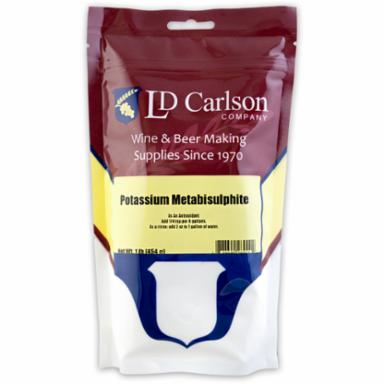Basic pH Meter 0-14 pH Range
0-14 pH Range

0-14 pH Range
Dry form of premium Slovakian wine tannin from the heart of the European/Spanish Chestnut tree. Wine Tannin will improve the flavor of a dull wine. Tannin can be used with white wines that have not been exposed to oak to add astringency. Wine tannin can also add an earthy flavor to red wines. Use in conjunction with gelatin or isinglass for later fining as well. Use 1/4 teaspoon per gallon for white or rose wine must: 1/3 teaspoon per gallon for red wine must; 1/2 teaspoon per gallon for fruit wine must.
One dose of Omega Yeast's specially formulated Propper Seltzer™ nutrient powers your favorite beer yeast through a healthy sugar-based fermentation in as little as 7 days. Want even faster? Try 4 days with Propper Seltzer™ nutrient and Omega Yeast's Lutra™ Kveik!
Recommended Use
One (1) pack provides yeast nutrient for (5) five gallons of sugar wort at 1.060 (15°P) or lower.
Bentonite is one of the most common wine clarifiers. To use add 3 tablespoons to 1 pint boiling water while stirring. Cover and let sit over night. Shake until creamy smooth. Mix 1 to 2 tablespoons of slurry per gallon of wine into a small quantity of wine then add the mixture to the rest of your wine. Rack after wine clears.
Diammonium Phosphate (Nh4) HPO4 is an excellent nutrient supplement for meads and wine. Use 1 teaspoon per gallon.
This is the principal acid found in apples and pears. Use per recipe directions up to 3/4 oz per gallon of must to balance acidity.
The principal acid found in grapes. Use in your recipe per directions up to 3/4 oz per gallon of must to balance the acid level.
Pectic Enzyme is used to reduce pectins in fresh fruit and fruit juice. Use 3/4 teaspoon per gallon in crushed fruit or juice. Let sit covered for 12 hours.
A blend of equal amounts of citric malic and tartaric acids used to balance wine musts.
A blend of equal amounts of citric malic and tartaric acids used to balance wine musts.